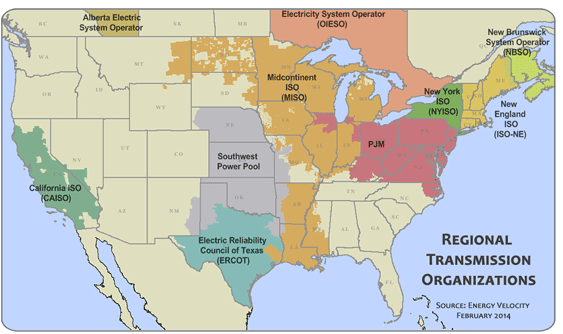At the turn of the twentieth century, electricity generation was in its infancy. The industry was local, its product was not yet widely available, and it was largely regulated by municipalities. But over the next three decades, electricity generation grew enormously, at an average rate of 12 percent per year, and State laws supplanted municipal authority. By 1930, the electric industry was regulated almost exclusively by States, which granted utilities geographic monopolies and in return subjected them to wide-ranging regulation. These growing utilities increasingly found it economic to connect to neighboring utilities across state lines. But, according to the Supreme Court, such interstate sales are “national in character” and therefore beyond the reach of State regulation.
Responding to this regulatory gap identified by the Supreme Court, Congress passed the Federal Power Act in 1935. The Act granted Federal regulators (now known as the Federal Energy Regulatory Commission, or FERC) authority over “the transmission of electric energy in interstate commerce and [] the sale of electric energy at wholesale in interstate commerce.” The Act constrained the reach of Federal authority “to extend only to those matters which are not subject to regulation by the States.” States therefore retained authority over retail sales to end-use consumers, such as residents and local businesses.
Today, interstate sales can either be bilateral between a buyer and seller, or through a regional wholesale market. The term of a bilateral sale can be between many years to just a single hour. Sales of energy in organized wholesale markets are all short-term, typically for a single hour.
There are seven regional markets in the U.S. operated by Regional Transmission Organizations (RTOs) or Independent System Operators (ISOs).

These RTOs/ISOs operate the transmission grid, dispatch generators, and organize wholesale energy markets. Each market operates pursuant to its tariffs, which must be approved by FERC. Typically, these organized markets run through single-price clearing auctions. Generators submit offers to sell quantities of energy, and buyers, such as distribution companies selling electricity to ratepayers, submit offers to buy. The RTO/ISO computes the clearing price where supply intersects with demand, and then accepts all buyers’ bids above the clearing price and all sellers’ offers below the clearing price. The RTO/ISO then orders those sellers to produce energy.
In addition to energy, power plant owners can also sell capacity. Capacity payments compensate plants for having the ability to generate energy. In most RTO/ISO markets, buyers must contract for sufficient capacity to meet their demand. Depending on the market, capacity can be purchased bilaterally or through RTO/ISO-organized auctions. In some markets, buyers can also meet their capacity obligation by procuring demand-side resources, such as demand response or energy efficiency.
While FERC has authority over the rates and terms of interstate sales of energy and capacity, States have jurisdiction over the generation facilities. Most importantly, States decide whether or not to grant permission to construct a new facility.